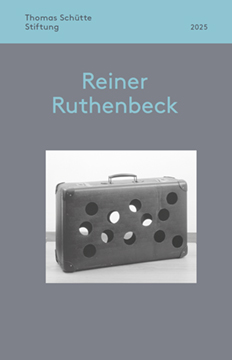
Essay by Dieter Schwarz
German / English
44 illustrations
88 pages
Paperback
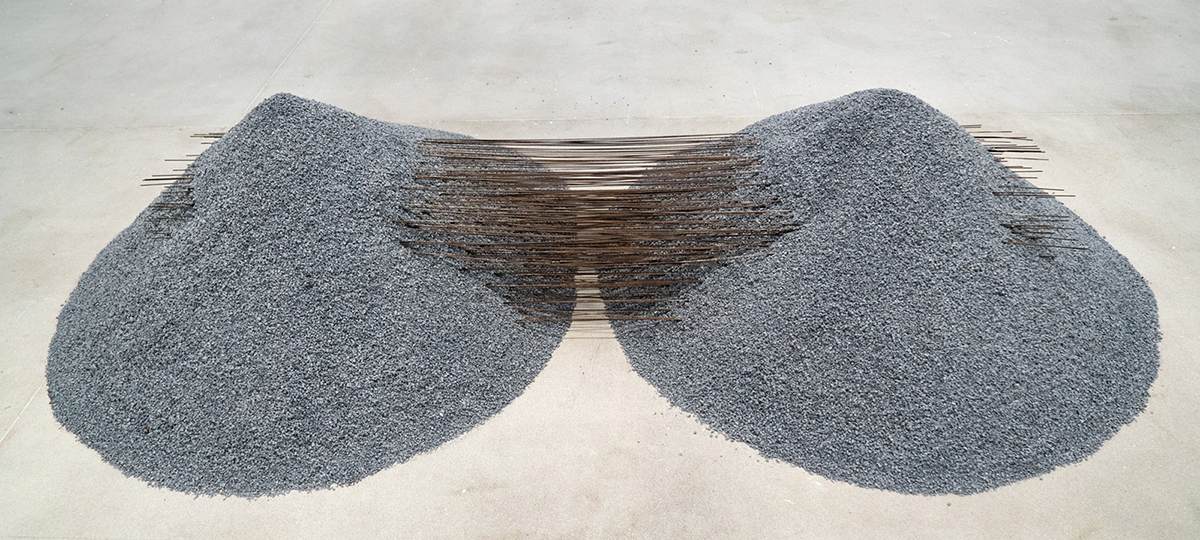
Reiner Ruthenbeck
Curated by Dieter Schwarz
11.04.2025 – 07.12.2025
Opening: Sunday, 13.04.2025, 12–5 p.m.
Reiner Ruthenbeck belonged to that generation of artists who began in the sixties to question prevailing forms of sculpture and to develop new ways of working.
As a trained photographer he travelled to Paris in the fifties, where he came into contact with the Surrealism. Ruthenbeck’s view through the lens was focussed on normal everyday things, which in the stillness can take on a life of their own. This magic emanates from Ruthenbeck’s first objects, in which one encounters something strange emerging from the familiar.
Ruthenbeck’s most unusual works were the ash heaps which made his name around 1970. The coarsely granular slag is poured to form a conical heap, penetrated by bars or thin steel rods. This fosters a state of subtle tension between the heaps shaped by gravity and the rigid steel. Ruthenbeck pursued these thoughts further in the paper piles, fragile volumes in space. In his work, action freezes to become a picture.
Ruthenbeck was fascinated by the properties of modest materials, which became works almost of their own accord. He preferred to work with wooden bars, cotton fabric and metal panels. His handling was simple and at the same time refined: His decisions are reduced to a minimum, shape and tension are brought about by gravity and the manner of suspension. Thus, the appearance, impression and impact vary. Sculptural forms are not determined by the material, but arise as if by themselves. The titles of the works describe what is to be seen. By ordering the materials into pairs of opposites – black/white, blue/red, hard/soft, open/concealed – they create a kind of abstraction negating the material and hence a feeling of unity, wholeness, and quietness. “Not being full up, but fullness!”, was Ruthenbeck´s maxim.
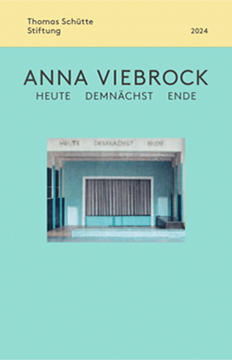
Anna Viebrock
HEUTE DEMNÄCHST ENDE
Facsimiles from Anna Viebrock’s workbooks
and 11 construction photos
Text by Rita Kersting
German / English
136 pages
Paperback
Each exhibition is accompanied by a publication which you can purchase at the Skulpturenhalle. The publication for the current exhibition you will receive for free within the entrance fee of € 5. Unfortunately, it is not possible to send it by post.

Anna Viebrock
HEUTE DEMNÄCHST ENDE
30.08.2024 – 09.03.2025
The art of the internationally renowned stage and costume designer Anna Viebrock is mainly at home in the theatre. Now she has created an installation at the Skulpturenhalle, in which parts of a stage set and her models play a central role.
Since studying at the Düsseldorf Academy of Arts in the 1970s, Anna Viebrock has developed her own distinctive way of intertwining space, architecture and sculpture, for which she has received much acclaim in the world of the theatre. Now, for the first time, her approach can be appreciated in a solo art exhibition.
Viebrock’s unmistakable stage sets are spatial collages whose naturalism is deceptive.
Through shifts in proportions, unusual combinations of architectural elements and “found” objects that tell their own stories, her hybrid spatial inventions unfold a great power.
The installation at the Skulpturenhalle was developed from the stage set for GIUDITTA, an opera that was staged in Munich in 2021 under the direction of Christoph Marthaler.
Curated by Rita Kersting
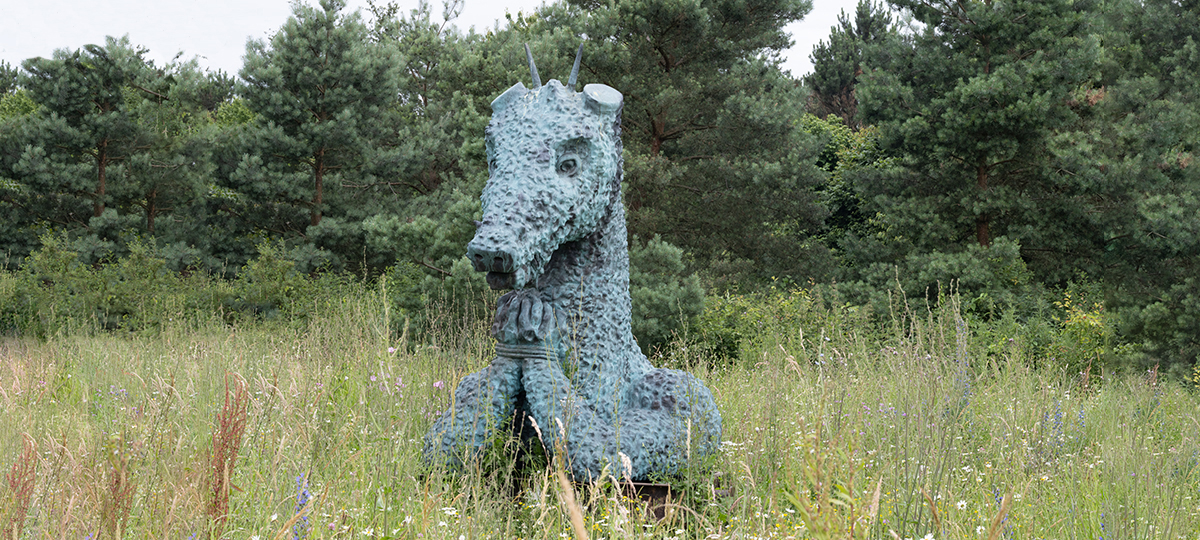
Thomas Schütte
Prints
22.03.2024 – 28.07.2024
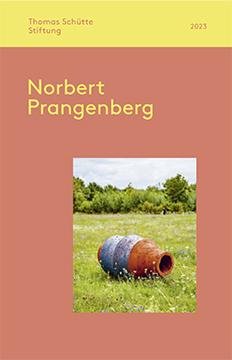
Norbert Prangenberg
Essay by Dieter Schwarz
German / Englisch
43 illustrations
88 pages
Paperback
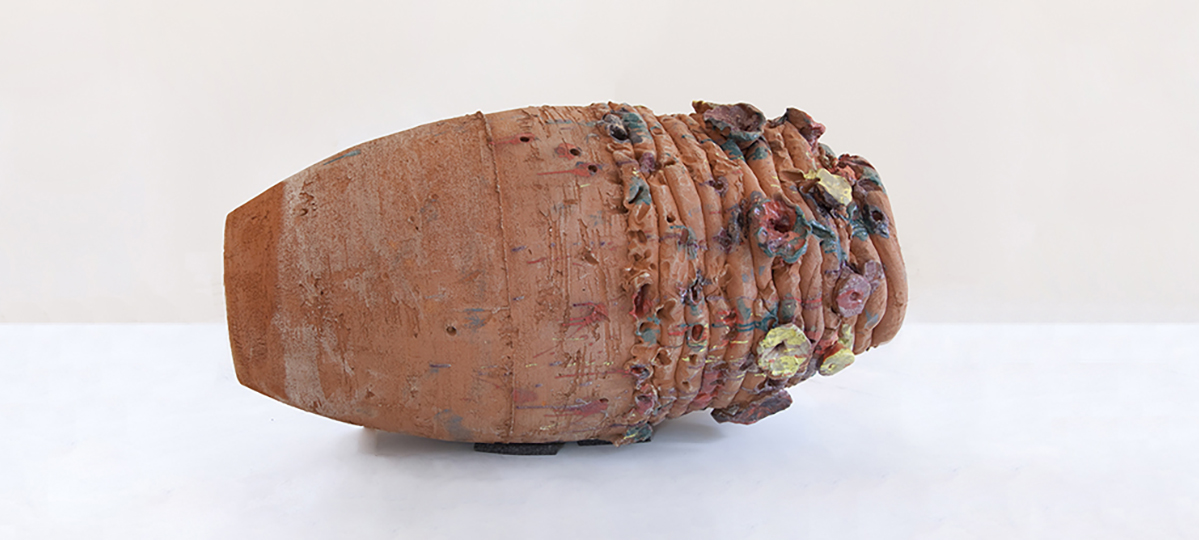
Norbert Prangenberg
Curated by Dieter Schwarz
01.09.2023 – 03.03.2024
Drawing, painting and sculpture flow together in various ways in Norbert Prangenberg’s work. On account of his ceramic figures, he was a pioneer, who brought ceramics back into fine art in the 1980s.
Drawing is the starting point of his work; simple shapes to be seen in his drawings are areas left blank inside the black ground, sometimes not actually drawn, but arising as cut-outs in the paper. This might appear gauche, and yet is executed with dream-like certainty. In his paintings, Prangenberg favoured watercolours, which he used to create a transparent ground, to oil paints. He proceeded to work with pastel crayons, crouching on the floor, so that the orientation of the forms, surrounded by clusters of looping lines, remained open. The immaterial shine of the pigments produces a strangely hovering surface.
In his ceramics, Prangenberg also went in search of simple forms with nothing premeditated or contrived about them. He placed round floral elements unfurling rather like a fan at an angle to the rings of clay. They attract attention to the surfaces, both inside and out. Not only the external surfaces are glazed, but often the interior as well, acting to guide the eye towards it and light up this space.
The surfaces of the recumbent figures are covered in a coloured glaze, cracks and punctuations, appearing like a membrane mediating between outside and inside. A group of such figures lying on the grass around the Skulpturenhalle do not propose any correspondence between their organic shapes and natural forms, being beholden only to themselves and thus just as foreign in a natural as in an architectural setting.
In his final years, Prangenberg turned to making small sketchy ceramic works – you can identify hints of objects, figures and landscapes. In contrast, the highly colourful small-format oils capture a figurative image in the painting, scenes with human figures and animals. Inside his chaotic colour scheme, Prangenberg conjured up an intimate end game.
Dieter Schwarz


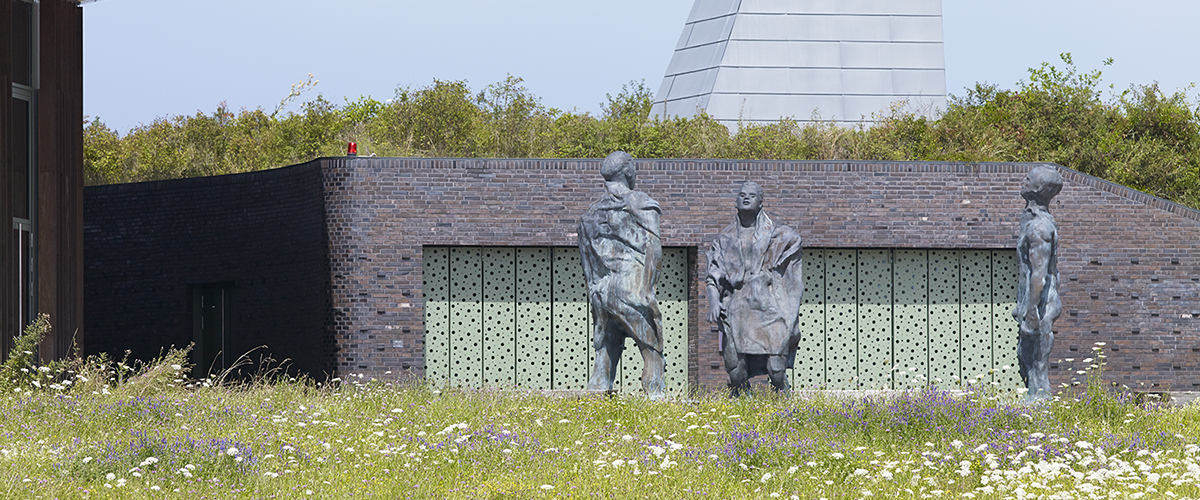
Thomas Schütte
Sculptures
13.01. – 30.07.2023
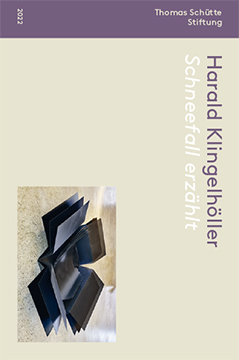
Harald Klingelhöller
Snowfall retold
Essay by Dieter Schwarz
German / Englisch
47 illustrations
80 pages
Paperback
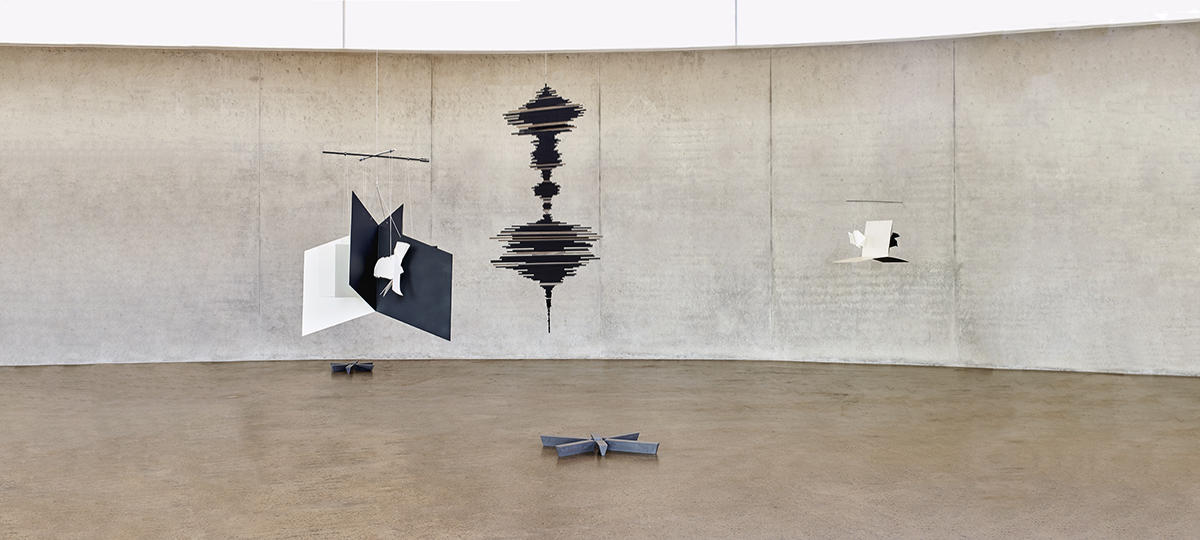
Harald Klingelhöller
Schneefall erzählt (Snowfall retold)
02.09. – 11.12.2022
Curated by Dieter Schwarz
Harald Klingelhöller’s sculptures are both verbal and material in nature. Klingelhöller creates various versions of a title, not an unequivocal representation. Title and sculpture are connected in tangible ways: the lengths of the words correspond to the measurements of the drawers in a cabinet or the size of star shapes; there are shadows cast by the sculptures, or the beats of a sonagram, capturing a spoken sentence.
The title In the Dreamer’s Dream the Dreamed Wake (chain) evokes the realm of dreams. Two versions are on show – a linked aluminium chain, which compartmentalizes the space, and a second of copper components laid out in a star arrangement on the floor.
There are referential pairs everywhere – mediating between the material weight of the stars and the immaterial distance evoked by their title, between the sculptures and their shadows transformed into sheets of metal and between black and white – light and dark.
Instead of providing a definitive solution, Klingelhöller creates possibilities, models in the scale of 1:1. The sculpture is not a fixed welded bolted or glued object, but rather consists of individual elements that are loosely interlinked. The shadow versions are kept in boxes made of black metal sheet; their weight keeps the walls of the boxes from falling apart. In the hovering versions the pieces complement each other, thus achieving a state of suspension.
As the title suggests, the exhibition can be read as a narrative with no beginning nor end, which unfolds around the elliptical shape of the Skulpturenhalle. It starts in the rotunda with the theme of evening and dream, and moves on to the question of life and death, followed by loss of the object, while the shadow versions mark a return to the spaces of the dream.
Dieter Schwarz
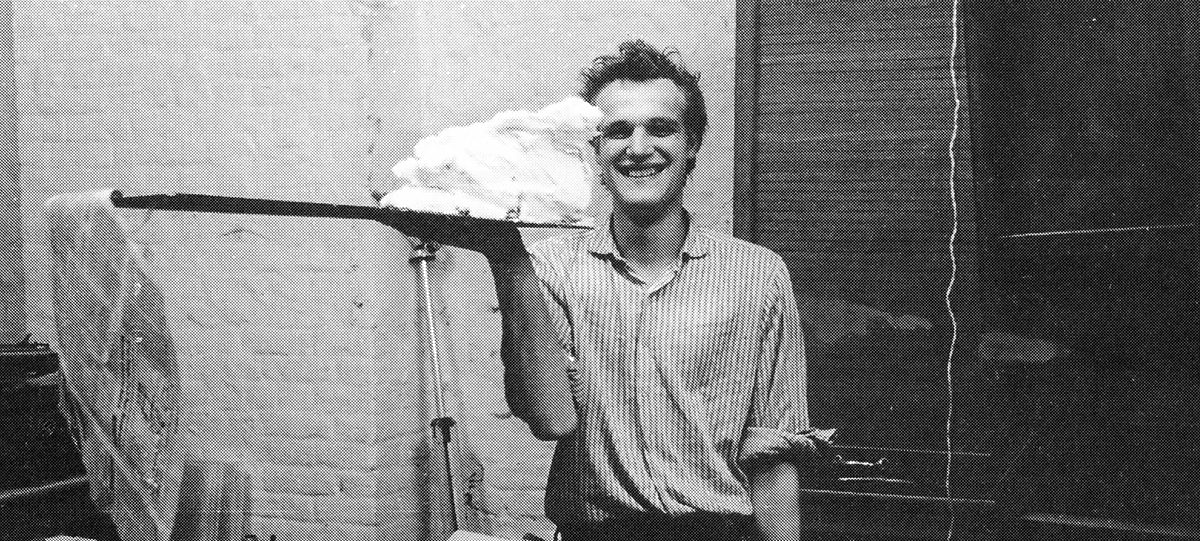
Bertram Jesdinsky
01.04. – 07.08.2022
Curated by Dieter Schwarz
Bertram Jesdinsky, who was born in Bonn in 1960, founded the “Anarchistische GummiZelle” (Anarchist Padded Cell) with friends in 1980; he painted graffiti and air- sprayed pictures on the walls of derelict houses and empty billboards, made music, shot Super 8 mm films and did performances. He extended his paintings to become walk-in sculptural rooms. The small objects related to these outline the world which fascinated Jesdinsky – everyday life in the Federal Republic of his childhood years. The food processors that he collected in view of their scurrilous nature belong here too.
Animals play an important role in Jesdinsky’s paintings. They resemble cut-outs and are rendered in striking colours. The images of an optimistic future-oriented world of motorways and trams are conceived in a graphic mode, with the figures shown against a brilliantly colourful backdrop. They tell stories full of precisely observed details, with animals causing havoc in between. There are also painted carpets in which figures are transformed into ornamental patterns.
Jesdinsky soon turned to working his motifs in three dimensions as well. To this end he selected easy-to-handle corrugated cardboard, which he coated with epoxy resin. The scintillating sheen of the resin made the cardboard indistinguishable from a ceramic. The most magnificent work is the giraffe queen with a sceptre, and a car tyre at her feet replete with little houses.
Jesdinsky loved playing with materials: for the bears he made a pelt out of casts of 5 DM pieces. The surface of the horse is made of galvanized perforated sheet, the body of a piggy mascot of printed linen and the dog dancing on its front legs of aluminium foil. For the stag Jesdinsky used copper plates and patinated them using acid. The liquid dripped onto a metal plate underneath, which oxidized, thus producing surprising effects. Jesdinsky had just begun to work with this way of painting based on random effects when he took his own life in Wuppertal in 1992.
Dieter Schwarz
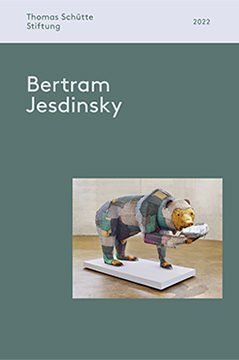
Bertram Jesdinsky
Essay by Dieter Schwarz
German / Englisch
45 illustrations
80 pages
Paperback
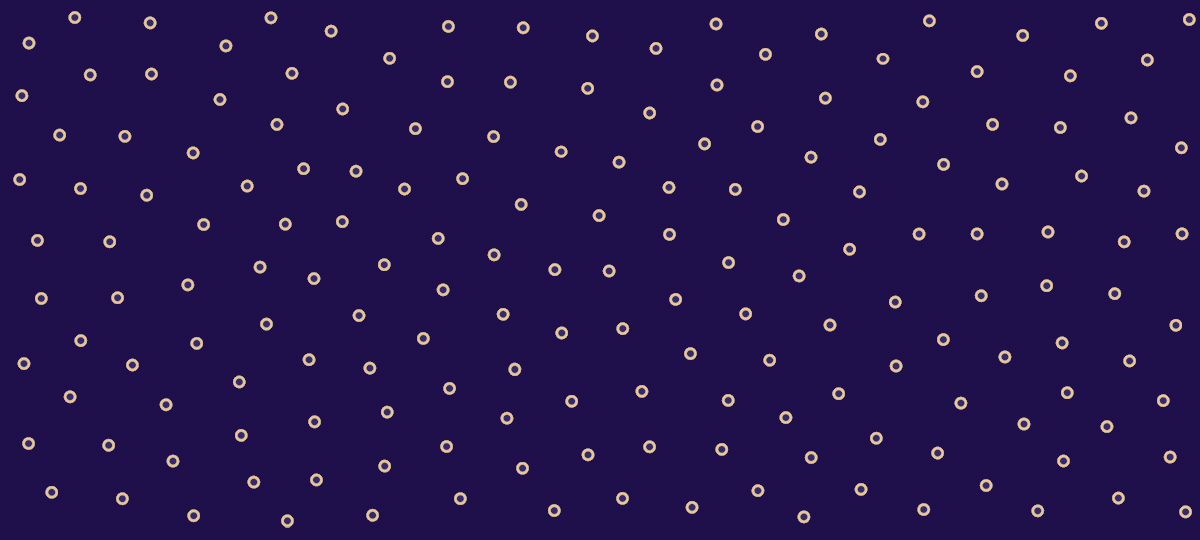
Thomas Schütte
Works 1975 – 1981
14.01. – 13.03.2022
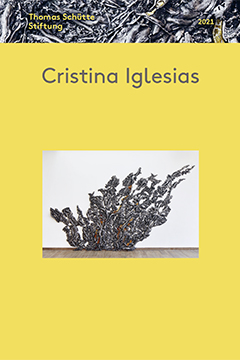
Cristina Iglesias
Essay by Dieter Schwarz
German / Englisch
45 illustrations
80 pages
Paperback
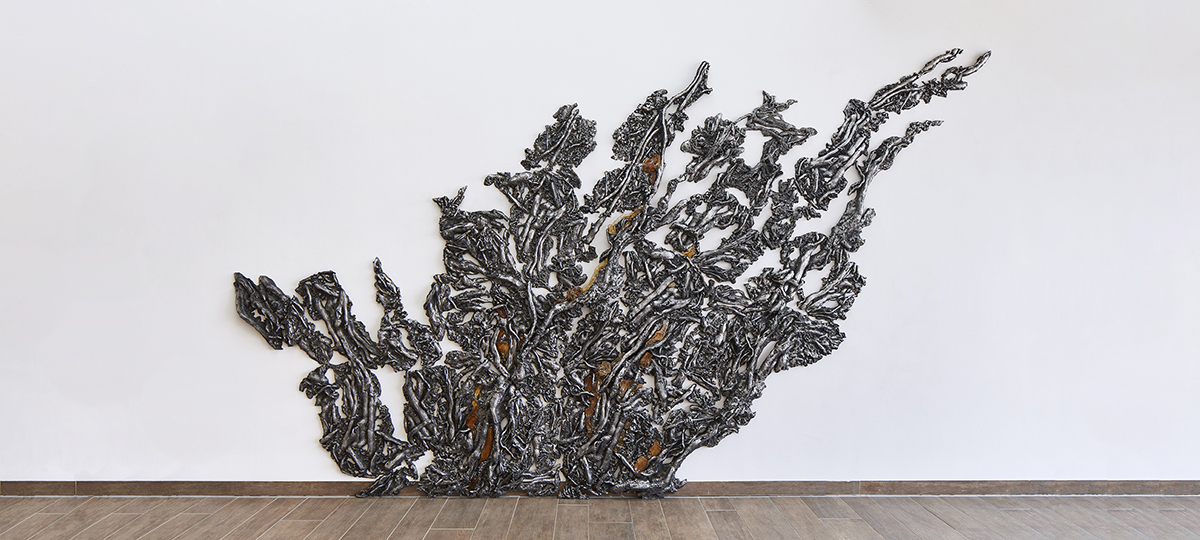
Cristina Iglesias at Skulpturenhalle
03.09.2021 – 12.12.2021
Curated by Dieter Schwarz
Cristina Iglesias’ works break with the traditional notion of sculpture in that she works with architectonic elements, most notably passageways, and also integrates fictional and fluid elements. Her architecture situates the viewer in an indeterminate situation between indoors and outdoors. Historia Natural y Moral de las Indias, for instance, is a sequence of spaces formed by the kind of freestanding terracotta features found in Moorish architecture. Growth comprises walls filled with branches, leaves and roots – not blossoming trees and plants, but casts of them; the plants thus become artificial nature. Flowing water forms a counterpoint as an uncontrollable element. The water of the fountains floods in and then recedes again, revealing the hidden world of plants inside. Entering the Pabellón de Cristal, we glance down through the gridded floor into the depths and encounter an imagined subterranean world reminiscent of fantasy fiction.
Iglesias has photographed models she has built of her works, and has then enlarged them and silkscreen printed them onto copper plates. These life-size images show a labyrinth of spaces staggered into the depth, but with no central perspective. The copper plates are reflective, so viewers see themselves and their surroundings in the fictitious spaces, thus becoming part of a reality from which they are excluded – a situation that defies resolution. Iglesias’ path has led from intimate architectures to works in outdoor spaces where the sculptures are surrounded by real nature. Her painstakingly executed models depict pavilions, corridors and labyrinths. The interior is conceived as a path through an imaginary world of shadows, at the end of which the visitor steps into the light of reality.
Dieter Schwarz
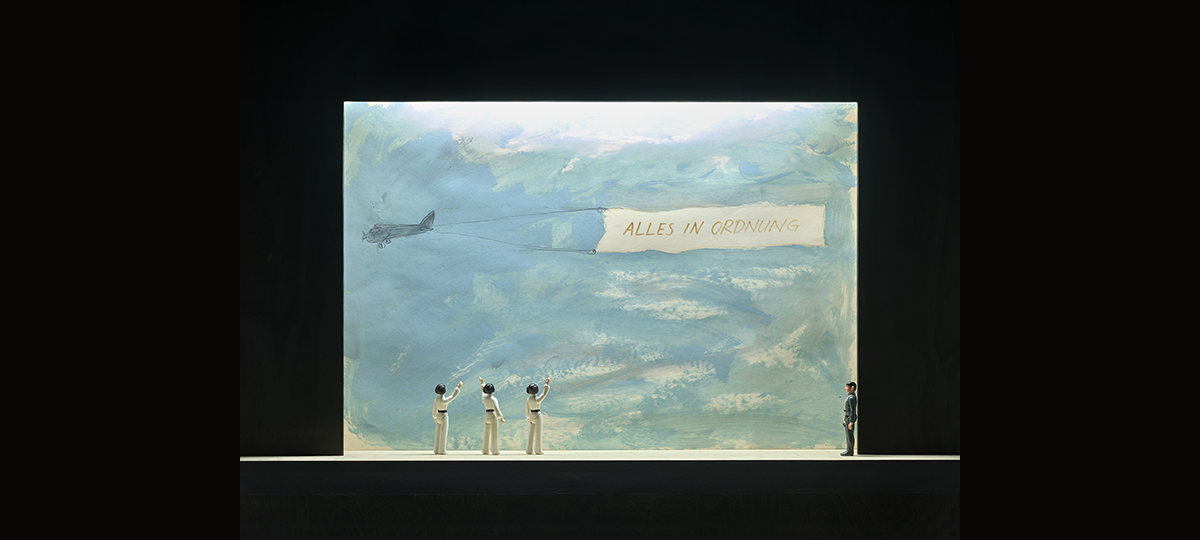
Thomas Schütte
Skizzen zum Projekt Großes Theater
30.04.2021 – 01.08.2021
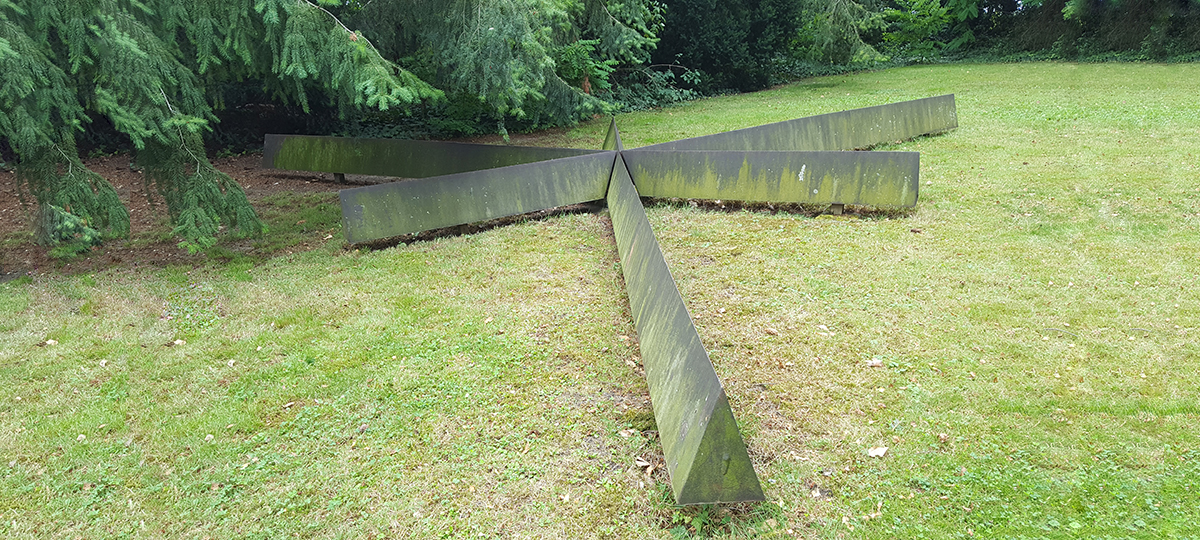
Bruce Nauman
Models
04.09.2020 – 18.04.2021
Curated by Dieter Schwarz
Bruce Nauman thinks in terms of models – potential forms – and that is why drawing plays such a central role in his work and in this exhibition. Drawings reveal the essence; they indicate what is conceivable. Drawings and models alike are stylistically unbound and open up the realms of imagination.
In the late 1970s, Nauman created models for subterranean spaces. Circle is the first model – an underground tunnel with a diameter of up to 200 metres. As it was unfeasible to build, the model served as an inspirational driver to imagine the space. It shows only the outer form. How would the space look from within, and how would one act inside it? The circle was followed by triangle and a square; these three geometric works are shown here together for the first time. The fourth model, Equilateral Triangle, consists of three axial lines arranged in a star shape, whereby the point of intersection divides them into different lenghs. What Nauman was interested here was the different psychological effects of the forms: the triangle creates an uncomfortable space, whereas the circle and the square suggest a safe space.
The models are cast in iron and appear as definitive, fully-formed sculptures. Yet it is not stability that Nauman seeks here, but instead the potential of the model. He is interested in the ambiguity of appearances, and in the interim spaces that open up between the real and the imagined.
The same can be said of his works with hands, which, in this exhibitions, form an intimate counterpoint to the large-scale models. Hands are not just functional instruments; they can also be the object of an action – as in a piano piece based on finger exercises, or in pairs of hands shown intertwined. These works, too, are models that tear asunder what we take for granted.
Dieter Schwarz
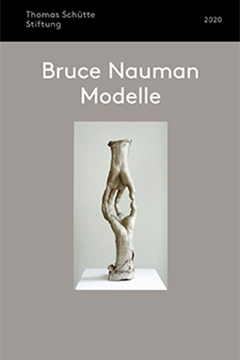
Bruce Nauman
Modelle
Essay by Dieter Schwarz
German / Englisch
28 illustrations
72 pages
Paperback